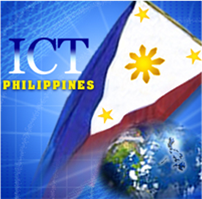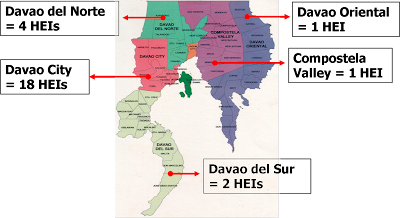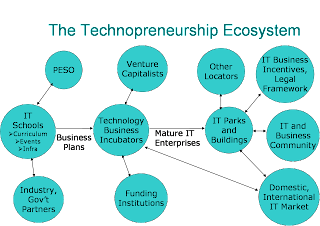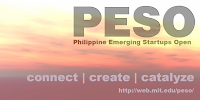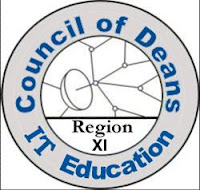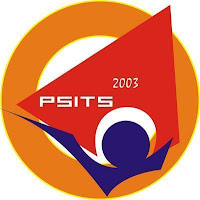 Much have been said and written about the Cebu Educational Development Foundation for Information Technology (CEDF-IT). In fact, it was discussed as a possible model for regions gearing up to be ICT hubs of the Philippine Cyber Corridor during the recent consultative workshop held by the Commission on ICT (CICT) at the Mindanao Economic Development Council (MEDCO) last September 5, 2007. The rise of the ICT sector of Cebu is greatly attributed to the programs of CEDF-IT and other regions are learning from their practices and experiences.
Much have been said and written about the Cebu Educational Development Foundation for Information Technology (CEDF-IT). In fact, it was discussed as a possible model for regions gearing up to be ICT hubs of the Philippine Cyber Corridor during the recent consultative workshop held by the Commission on ICT (CICT) at the Mindanao Economic Development Council (MEDCO) last September 5, 2007. The rise of the ICT sector of Cebu is greatly attributed to the programs of CEDF-IT and other regions are learning from their practices and experiences.CEDF-IT is an offshoot of the first Cebu IT Summit convened last March 2001. The Cebu IT Summit identified the need to enhance the quality and quantity of human resources in the IT industry and CEDF-IT was the response to this challenge by the major players in the industry, the academe, and government and NGOs.
CEDF-IT was organized to undertake the following six-fold mandate: (1) promote and support the development of IT education in the tertiary level through a Faculty Development & Incentives Program and a Students Scholarship Program; (2) enhance IT education in the tertiary level by assisting member-schools in curriculum development, improvement of equipment, and other related concerns; (3) promote the early acquisition of relevant IT knowledge and skills in the primary and secondary school levels by assisting these schools integrate IT education within their curriculum; (4) assist in the promotion and provision of non-formal IT skills training through short-term certificate courses; (5) guarantee the efficient absorption of qualified IT graduates by industry through an employment mechanism set-up solely for this purpose; and (6) serve as an advocacy group for the formulation of pertinent HR-related IT policies, beneficial national and local laws, and appropriate incentives program by the national and local governments.
The flagship projects are the following: (1) IT Teachers Academy; (2) Professional Certification Center; (3) HR Survey & Monitoring Unit; (4) R&D Center & Institutionalization Unit; (5) Entrepreneurship and Incubation Center; (6) Quality Assurance in IT Education; (7) Cebu is an IT Education Hub; (8) Global Outreach for IT Pinoys.
The Board of Trustees is private sector-led. The officers and directors are a good mix of people from the academe and industry.
It is worthy to note that during the years 2001 to 2003, only 100 to 300 graduates were appropriately employed from a total pool of 2,200 graduates. In year 2006, 600 graduates qualified for entry-level employment with a 1,500 minimum demand industry, from a pool of 2,200 graduates. A very substantial improvement indeed.
Incidentally, CEDF-IT's vision-mission is: the foremost HR development source in the field of Information and Communications Technology (ICT); and nurturing quality ICT education by establishing high industry standards. Their slogan or mantra is “matching jobs with people and matching education supply with industry demand".
CEDF-IT has a certification program called Philippine IT General Certification Examination (Phil-IT GCE). It may be considered as an overall evaluation of the graduate’s level of cognitive, psychomotor, and affective learning as specified in B.S. Computer Science, B.S. Computer Engineering, B.S. Information Technology, and B.S. Information Management curricula, as well as the graduate’s knowledge, skills, and attitudes pertinent to advanced or latest trends in IT as required by industry. In a way, the PHIL-IT GCE serves as an interim solution for the need for a board examination, testing the IT skills of Filipino would-be professionals, with IT skills set by Filipino IT professionals, yet addressing international industry benchmarks.
In the span of six years, the following tenets have characterized the CEDF-IT model: (1) CEDF-IT is private sector-led; (2) CEDF-IT enjoys exemplary government support; (3) CEDF-IT endeavors to exercise development-oriented “empowered leadership”; (4) CEDF-IT is an “entrepreneurial venture”; (5) CEDF-IT “core and foundational values” animate its way of doing and being.
CEDF-IT has been instrumental in positioning Cebu as a location for the development of IT services (e.g., software development, IT deployment services) as well as IT-enabled services (e.g., BPO, call centers, multimedia web). CEDF-IT is also building Cebu's image as an innovation island, similar to the Silicon Valley model.
To further prepare graduates for absorption in industry, various trainings and seminars were held along the years. Bridge courses for entry-level software developers were also developed (e.g., Oracle, Microsoft.Net, Java, PHP Web Programming, IPv6, Systems Programming in C). The Career Link Services Center takes care of the efficient absorption of graduates in industry and a quarterly newsletter is published to highlght the activities and achievements of CEDF-IT. In 2006, CEDF-IT celebrated its 5th anniversary with a big party.
Source: Presentation slides of CICT during the Philippine Cyber Corridor Briefing last September 5, 2007 at MEDCO.
